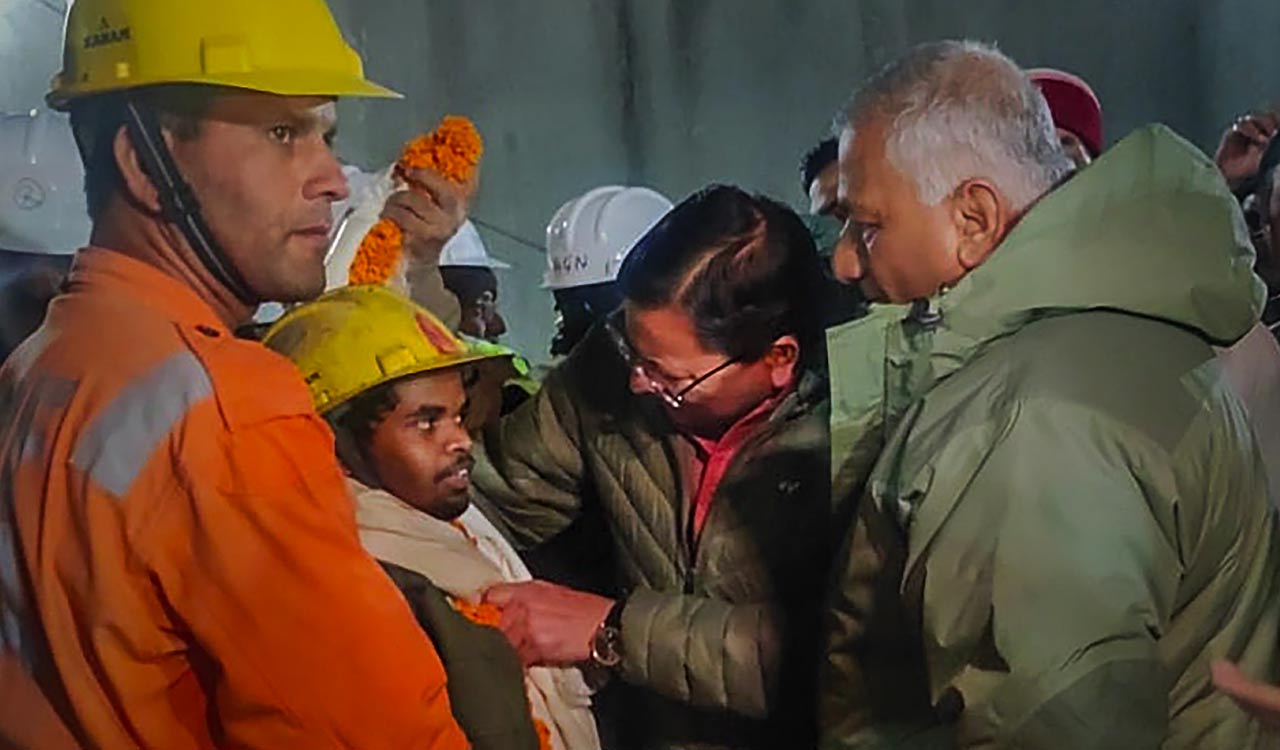
It is in the national interest that there should be an environmental audit of all the ongoing big projects in the Himalayas
Published Date - 11:30 PM, Thu - 30 November 23
The entire nation heaved a sigh of relief after 41 workers were safely pulled out of a collapsed tunnel in Uttarakhand in a challenging rescue operation that lasted 17 days. While the evacuation exercise will be remembered for the grit, determination and combined sense of purpose shown by all those involved in it, the incident once again brought into focus the fragility of the Himalayan region and how indiscriminate execution of developmental projects has been playing havoc with the environment. The Himalayan ecosystem is one of the most fragile in the world, sensitive even to the slightest alterations. It is critical to draw lessons from the collapse of an under-construction Silkyara tunnel and improve safety measures. More importantly, it is time to reassess the development model of the Himalayan region, especially mega and hydroelectric projects. The Himalayas are a major site of climate crisis-triggered disasters, with glaciers receding and unusual rainfall patterns emerging. After a prolonged suspense-filled wait, marked by alternating moments of hope and despair, the rescue teams could finally extricate the trapped workers. A detailed probe is needed to figure out what went wrong with the tunnelling work which is part of the 880-km Char Dham highway project. The most glaring omission was the failure to build an escape passage for the benefit of workers during the construction period, as stipulated in the original cabinet approval. Lessons should be learnt from the Silkyara nightmare and there must be no delay in initiating remedial action. There are allegations that construction works had been deliberately designed with the intent to bypass environmental impact assessment, which meant there was no disaster management plan in place.
Much of the construction of the mountain highways is subcontracted to private firms which work on tight deadlines and budgets. Whether it is land subsidence at Joshimath, the gateway to Badrinath pilgrimage, or frequent landslides and flash floods in Uttarakhand and Himachal Pradesh, the Himalayan region is highly vulnerable and unpredictable. It is in the national interest that there should be an environmental audit of all the ongoing big projects in the Himalayas. Projects like Char Dham Road have made an already fragile landscape even more vulnerable to disasters. The ambitious project seeks to build wide, all-weather roads between the Hindu holy towns of Gangotri, Yamunotri, Badrinath and Kedarnath. There are allegations that the Centre, in a hurry to finish the project before the next general elections, had split the project into 53 separate sections, each less than 100 km in length, to evade the need for an environmental impact assessment. Since the start of tunnel driving, the geological conditions have proved to be more challenging than predicted in the tender documents. As Uttarakhand is gearing up for several such projects in the coming years, the Silkyara incident raises concerns about the potential risks to human lives.





Leave a Reply